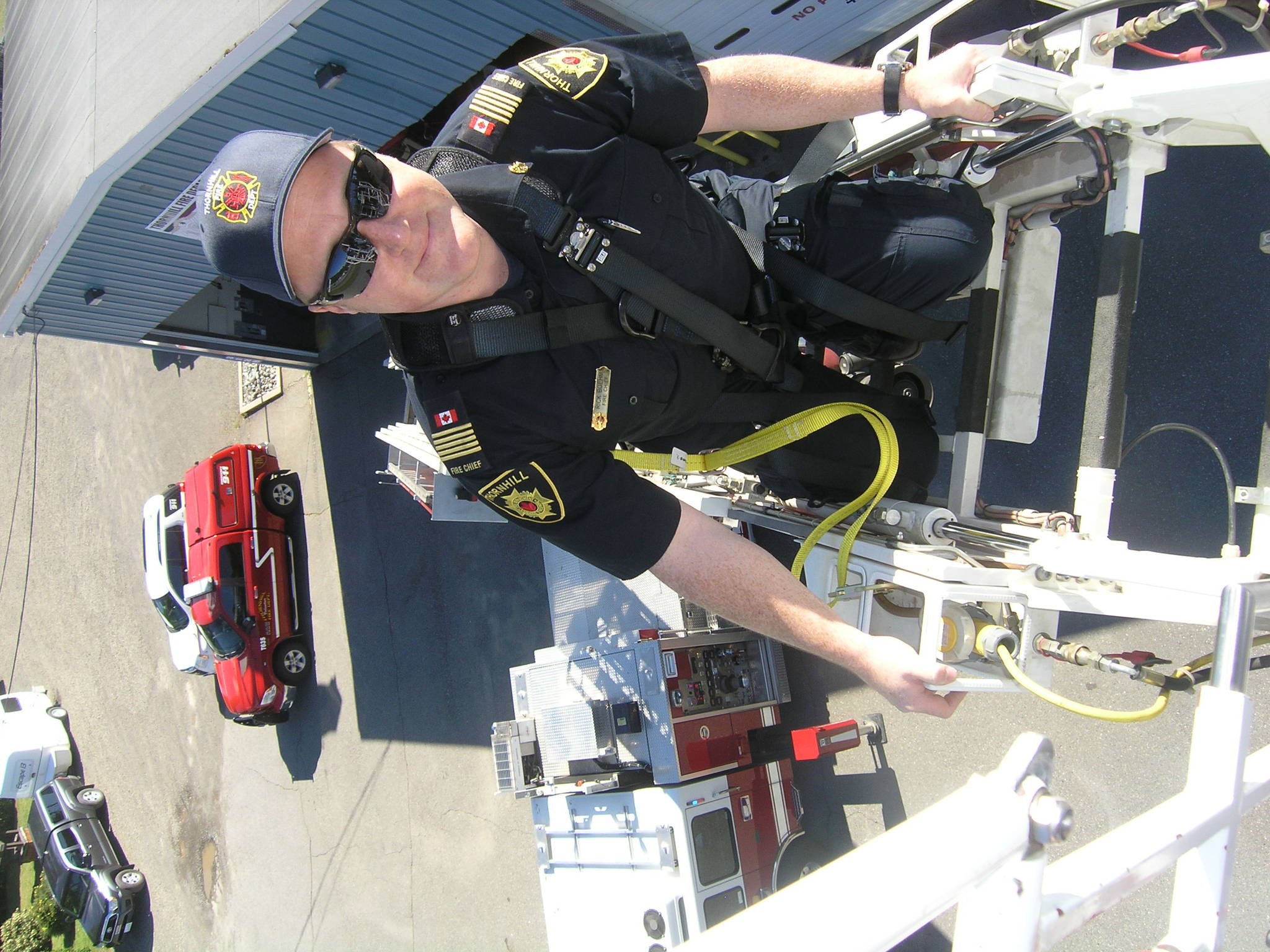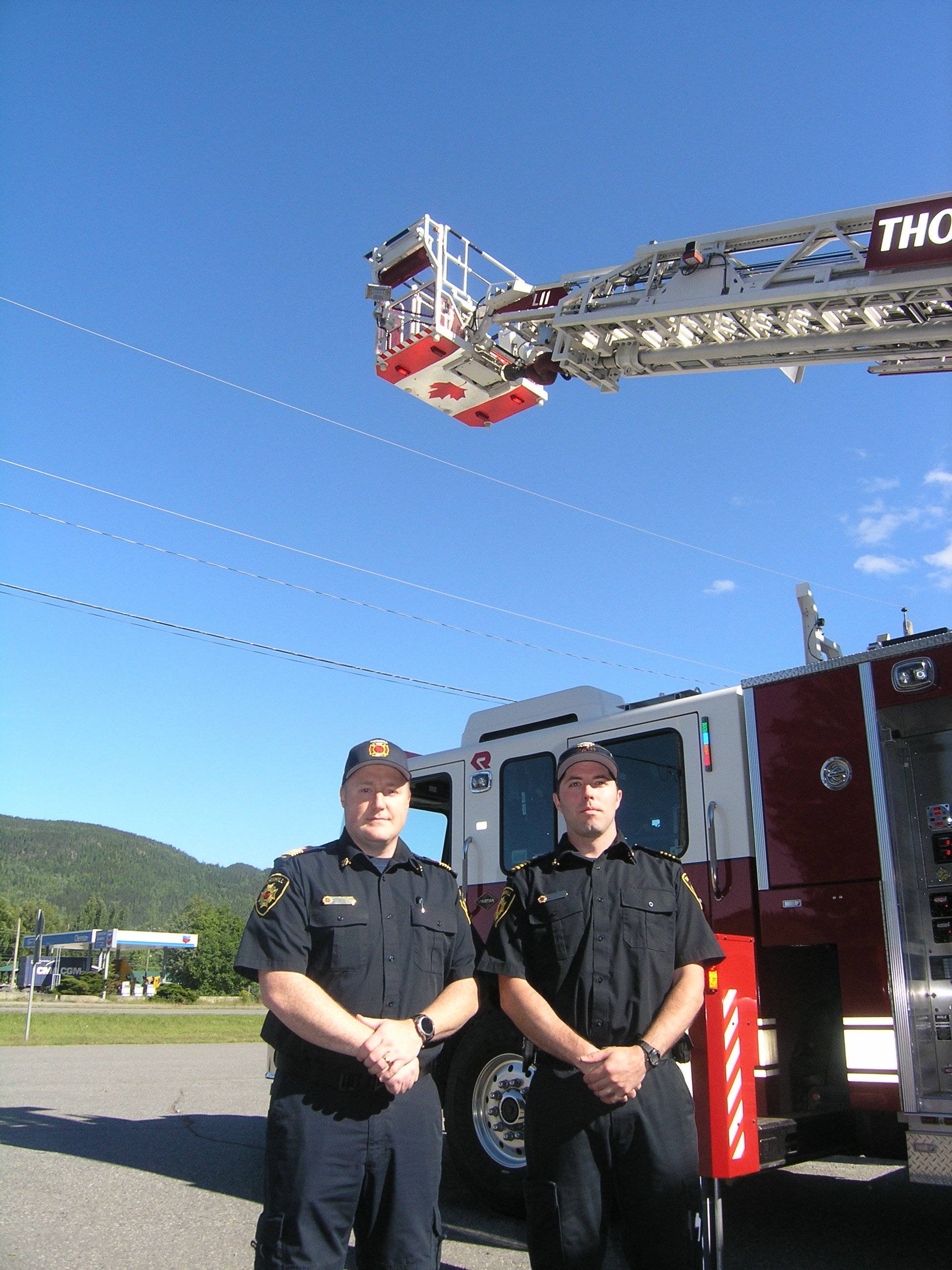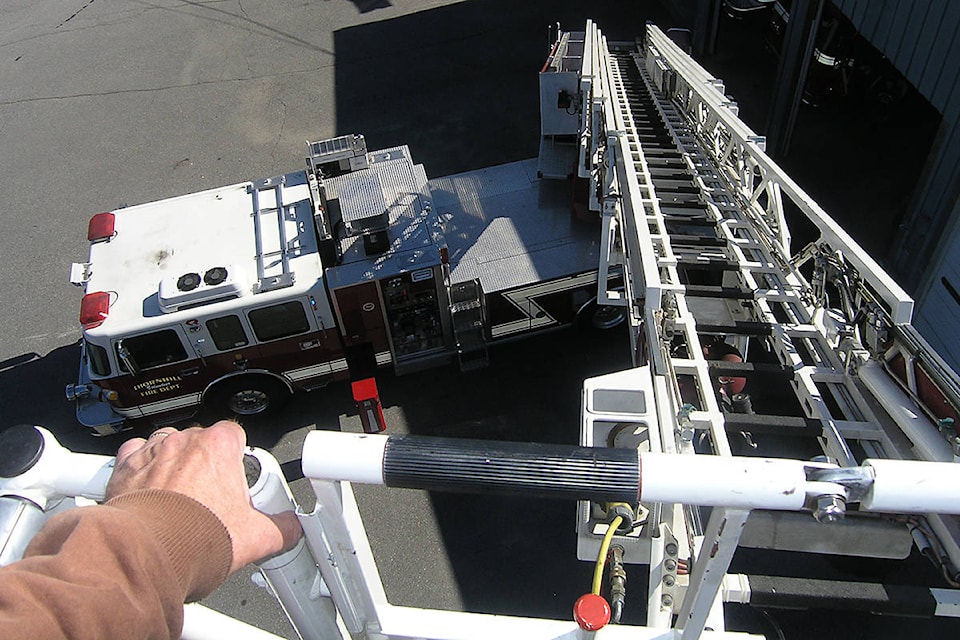Christopher England takes his hands off the controls, presses a button, and then sits back, sipping from a cup of coffee.
In front of him, the ladder from the Thornhill Volunteer Fire Department’s latest addition swivels slowly from where it had been extended to the left and in a few seconds, is resting back in its home position.
England, the department’s deputy chief, may have minutes before extended the ladder of the Rosenbauer Raptor aerial ladder truck manually from a control seat at the back of the vehicle, but it was the vehicle’s own electronic memory that returned it automatically.
It’s just one of the more remarkable features of the barely-used 2008 model year Raptor newly introduced into service by the Thornhill department.
That the vehicle’s computer system can remember where the ladder is first directed and return to that position automatically when necessary during a fire or rescue not only makes it more efficient, but takes away the guesswork of a crew concentrating on the task at hand, says department chief Rick Boehm.
“It’s about safety and performance,” said Boehm as he and England demonstrate some of the vehicle’s capabilities.
A firefighter in the control seat at the base of the ladder can easily move the ladder to where it’s needed and control all its functions via toggle switches while observing everything through video cameras and a monitor. The same functions can be performed by a similar control panel affixed to the cage at the top of the ladder.
The truck was purchased last year from an American fire department because it was surplus to its needs.
Boehm said the Thornhill department had been looking to replace its now-former ladder truck as part of a regular turnover of older vehicles with newer ones to keep current with guidelines set by insurance companies in order to provide structure coverage.
“We knew it was out there but it was beyond us, so we just sort of let it go,” said Boehm.
But when the American department dropped the price significantly, the Thornhill department pounced, securing it for US$560,000, which worked out to Canadian $723,000, approximately half of the cost of a new one.
With relatively few service hours and only 6,000 miles on the engine, Boehm said the Raptor was just too good to pass up.
“We even went to Victoria which has one and they let us examine theirs,” said Boehm of the due diligence put in before the purchase.
The truck’s chassis was put together at a plant in Michigan, then shipped to Germany where the ladder components were installed and then shipped back to the United States for final assembly.
It may seem strange that a European company is involved in a North American fire truck, but Boehm says the Europeans are at least a decade ahead of North American companies in use of technology.
If the electronics and computerization are impressive, so is the maximum ladder extension – 105 feet compared to the former Thornhill truck’s 75-foot ladder.
A fixed hose running up the underside of the ladder has two positions from which water can be directed toward a fire.
Both England and Boehm are quick to point out that it’s not just ladder height that counts when on a fire, it’s also the reach of a ladder to safely manoeuvre out and over obstacles to take firefighters as close as is safely possible to a fire.
“Electrical wires. That’s always something to think about,” said England of a possible impediment to fighting a blaze.
The pair also notes this is not just a firefighting vehicle because the ladder’s extension capabilities and the cage at the top of the ladder provides a workspace for firefighters, and a secure platform from which to rescue people from heights.
“Think of a situation before. You’d have a firefighter on the ladder and the person needing rescuing on the ladder above. Then what do you do,” said Boehm of the rescue cage, which does away with that scenario.
What’s more, the fire truck’s ladder memory means it will lower itself to let people out and then return to the same height and position as before for more rescues, said Boehm.
“That takes the guesswork out of manoeuvring the ladder back,” he added, something crucial given the everchanging dynamics of a fire or other emergency.
An additional option is the ladder’s ability to stretch out below grade so that, for instance, people on a creek bank below where the truck is parked can be rescued.
It also allows the truck to be used on uneven ground using stabilizers that stretch from near the wheels down to the ground.
It means that while the truck may be tilted, the ladder base’s own automatic hydraulic stabilizers keep it level and steady for safe usage.
And while the truck may be from an American and German manufacturer, it came with a visible piece of Canadian content.
“They had an American flag painted on the bottom of the cage,” said Boehm. “When we went to pick it up, they had repainted it with a Canadian flag.”


